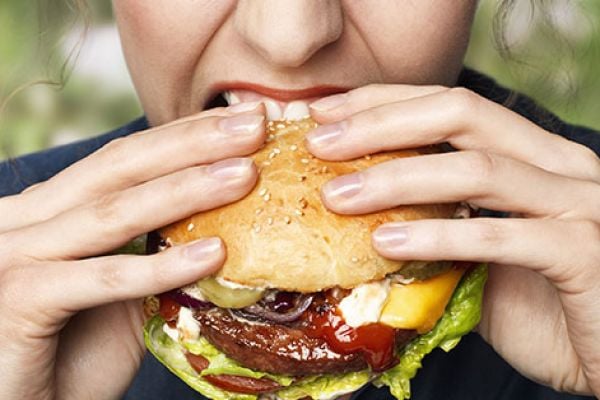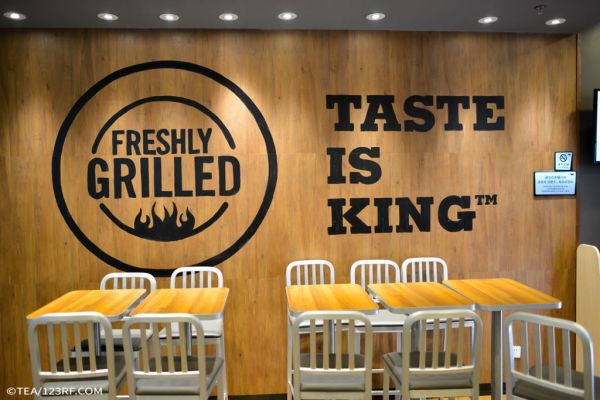Fast-food restaurants are staying open later providing sustenance to night owls and a rare source of growth for the beleaguered industry.
Late-night customer traffic at fast-food places jumped 12 per cent in the year ended in August, according to data from Port Washington, New York-based NPD Group Inc. That compares with a 0.2 per cent gain for total traffic.
The increase follows a push in the past few years by more restaurants to stay open until the wee hours and offer special menus designed to appeal to nocturnal customers. Checkers and Rally’s are introducing deep-fried grilled-cheese strips, while Jack in the Box Inc. is selling chicken nuggets slathered with cheese, bacon and ranch -- part of a “Munchie Menu” that starts after 9 pm.
Attracting a late-night crowd has brought both risks and rewards to restaurants, said Darren Tristano, executive vice president at research firm Technomic Inc. in Chicago. While the crowds can be rowdy or drunk -- putting more demands on security -- customers come hungry and often don’t apply the same restraint in ordering food as they might during the day.
“They’re looking for food to sop up all the beer, wine and spirits they’ve been drinking all night,” he said. “It’s impulse-driven -- things that are crave-able.”
Yum! Brands Inc.’s Taco Bell chain helped spur the industrywide shift to late-night menus in 2006 when it introduced the “Fourth Meal” campaign. It was part of the company’s strategy to give people more reasons to come to Taco Bell besides lunch and dinner.
Crunchwrap Supreme
Participating Taco Bell locations are open until 3 am on Friday and Saturday nights, with some operating until as late as 4 am or 5 am. About 95 per cent of US Taco Bell stores are open for late night. That’s helping spur sales at the chain, which expects to expand to at least 8,000 locations in the US, Chief Executive Officer David Novak said during a conference call in July. “We have great progress now at breakfast. We have happy hour. We have the Fourth Meal,” Novak said. “We see this as a power brand that can be leveraged throughout the day.”
The Fourth Meal features includes 760-calorie nachos and a 540-calorie Crunchwrap Supreme filled with beef and cheese sauce. Taco Bell promoted the offerings with a 60-second ad during last year’s Super Bowl that showed elderly friends escaping from their retirement home.
More Advertising
Jack in the Box, a burger chain based in San Diego, also has embraced the late-night approach. The company introduced the Munchie Meal last year, offering combos for $6 between 9 pm and 5 am. They come with two tacos, fries, a drink and a choice of four entrees, including a fried chicken, bacon and hash brown sandwich topped with ranch -- that meal has 1,756 calories. They added a jalapeno burger to the line-up this year.
Late-night and breakfast orders fuelled the chain’s same-store sales growth of 2.4 per cent in the third quarter, Jack in the Box CEO Leonard Comma said during a conference call in August. The company plans to continue investing in advertising and new items for late night, he said.
The total US fast-food industry is expected to increase sales 1.4 per cent to $198.9 billion this year, after growing just 0.7 per cent in 2013 and 0.8 per cent in 2012, according to research firm IBISWorld Inc.
For now, though, late-night fast-food sales are just a “small piece of the pie,” said Bonnie Riggs, a restaurant analyst at NPD. And staying open longer hours isn’t a cure for the restaurants’ struggles to compete with fast-casual chains like Chipotle Mexican Grill Inc.
Fight Risks
The late-night expansion also comes at a price. Longer hours can bring fights, higher labour costs and the potential for more burglaries, Tristano said.
In July, McDonald’s Corp. lost a $27 million jury verdict over a claim that lax security at one of its restaurants led to the deaths of two teens, one who was beaten to death by a mob. The restaurant where the teenagers were attacked had drawn police attention for fighting during late-night hours in the past, according to a plaintiffs’ document summarizing depositions and police reports.
Terri Hickey, a spokeswoman for McDonald’s, declined to comment on the case because it’s a pending legal matter. “Whether at our company owned or franchisee-owned restaurants, the safety and well-being of our customers and employees is of the utmost importance, and we strive to provide a safe environment in our restaurants,” Hickey said.
Working Late
Not all late-night customers are party-hopping teens. Restaurants also attract people working the graveyard shift, said Rick Silva, CEO of closely held Checkers Drive-In Restaurants Inc. His company operates about 800 stores under the Checkers and Rally’s brands, with $750 million in systemwide sales this year.
“There is a group of people that are actively working during that time,” Silva said. Others are up late playing video games with friends and don’t have much to eat at home. “So they’ll do food runs,” he said.
This month, the company is introducing grilled-cheese sandwich strips that are breaded and deep fried -- a four pack is $1.99. They also sell chicken wings and Baconzilla fries slathered in cheese, ketchup and bacon.
Customers aren’t typically looking for healthy fare at that hour, Silva said. “Our menu is built for late-night cravings,” he said. “If you’re out late and you’re partying with friends, you’re not craving salads.”
Odd Hours
Dunkin’ Brands Group Inc., which owns both Dunkin’ Donuts and the Baskin-Robbins ice-cream chain, also is honing in on the late-night crowd. The company is focused on getting more customers to eat ice cream at odd hours to help boost sales. While there are more than 500 Dunkin’ Baskin-Robbins combo stores open all hours in the US, none of the standalone ice cream shops are 24-hour locations.
“If you’re a worker and you have your break at 2 in the morning, an ice cream following that might be nice,” Nigel Travis, CEO of Canton, Massachusetts-based Dunkin’ Brands, said in an interview.
Part of the after-10 pm surge can be attributed to a broader shift in American consumers’ habits, said Technomic’s Tristano. Millennials are grazing and snacking more, rather than just eating three square meals, he said. “They’re having smaller meals more frequently,” Tristano said. “These traditional day-part meals are shifting.”
Bloomberg, edited by Hospitality Ireland









